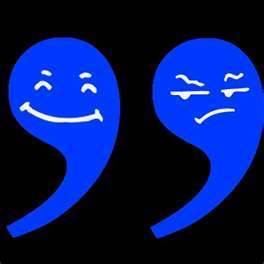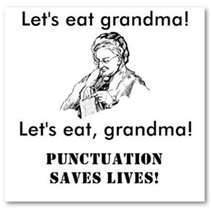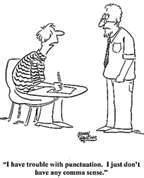Piper Shelly's Blog, page 271
December 9, 2012
It’s out! It’s out! OMG, it’s finally OUT!!!
Wow, what a year! Let me just take a deep breath, and then I’ll tell you the fantastic news!
Okay, here we go… Recently I told you about my fabulous experiences in 2012. Well, add this to it:
My second book is out NOW! Can you believe it? Honestly, I have trouble wrapping my mind around all that. Everything went super-fast this time, and the Kindle version is already available.
Go grab it and enjoy the sportily fresh YA romance! 
Happy 2012…again!
Piper








November 30, 2012
An angel in my bedroom. No shit.
Really, I think everyone should have a guardian angel. I have mine. And I’ll never forget the day when he came to say Hi.
What’s playing?
It’s December, winter is just around the corner. The colder months always make me a little sentimental. Thinking about the year, my goals, my achievements, my failings…
2012 was extraordinary. I knew it would be, even before it started. Felt it in the upper left corner of my gut – the part responsible for my intuition.  So I’m happy to say, there weren’t many failings, or none that I’d remember. But I had some very great moments.
So I’m happy to say, there weren’t many failings, or none that I’d remember. But I had some very great moments.
First off, I finished my debut novel Her Game, His Rules. On February 14th, I got a wonderful Valentine’s present: An offer of a contract. Black Opal Books loved my story and wanted to publish it. 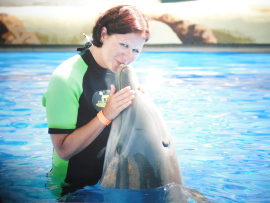 Between that and the release date in September, something else happened, which I’d dreamed of for over 25 years and never thought I’d ever be able to do it. I touched a dolphin. On a vacation with my family in Tenerife, I got the chance to step into a pool with two of those fascinating animals. And best of all, I got to kiss them, cuddle and make a little contact. That moment almost topped everything else in my life. Almost… But there was one more thing.
Between that and the release date in September, something else happened, which I’d dreamed of for over 25 years and never thought I’d ever be able to do it. I touched a dolphin. On a vacation with my family in Tenerife, I got the chance to step into a pool with two of those fascinating animals. And best of all, I got to kiss them, cuddle and make a little contact. That moment almost topped everything else in my life. Almost… But there was one more thing.
And now we’re going to cross the borders between reality and something that feels like reality, but many call it fiction. I wouldn’t. Because I knew it was real when it happened to me.
Several years ago, I had a cat. He was an orange tiger and his name was James. One early morning, after my husband had left for work and I turned over in bed to get another couple hours of sleep before I had to get up too, I felt Jamie jump up on my bed and settle next to my legs. Nothing unusual, so I didn’t bother, even when he crawled up along my leg to lie right beside me on the pillow. I fell asleep again, then woke next with the alarm going off. I rolled over, climbed out, dressed, and looked for the cat. He wasn’t in my bed any longer, or in the room for that matter. Okay, he probably already trotted to the kitchen, waiting for his breakfast. I went to the door…and stopped dead. The door was closed.
Of course it would be. Hubs always closed it when he left. But damn, how did the cat get in and out? It was weird, but it didn’t really trouble me. Maybe I dreamed it all. Yeah, it is possible. Except it happened several mornings in a row after that. Always right after my boyfriend left and I was about to fall asleep again. Do you know that kind of half-sleep-half-wake moment when you’re still aware of everything around you, but seem to be held by an invisible force, unable to react? It’s the time where you drift over, but aren’t fully there yet. And when the cat kept coming in the morning even though the door was closed, I started to dread that moment. Because I knew something was off. Very off. Especially, when the cat’s visits started with the sounds of footsteps now. Very human footsteps, when no one was home.
I told my husband about it, but he shrugged it off. “You’ve been dreaming,” was all he’d said. So I told my friend. She was intrigued. “Really? How cool is that?” Yeah, right. It would have been cool, if it hadn’t happened to me. In fact, it scared the shit out of me. Finally, I called my mom and told her on the phone. She is—like me—a little perceptive of other things.
Know what she said? “Don’t be afraid, honey. Maybe there’s just someone wanting to get your attention.”
Fantastic! My attention? He had all of it now.
My mom also gave me the advice not to dread the moment when he would come back, but just be alert and observant. Seriously? Be observant when I heard footsteps,  noticed how the door opened and closed silently, felt the mattress sink under someone’s weight, but couldn’t open my eyes at that moment because sleep was tugging at me? Those few weeks were the scariest in my life. But…they were also the most enthralling. Born with a natural curiosity, I wanted to know what was behind those creepy visits. I started researching the history of the house, but couldn’t find anything that led to a paranormal experience like this. I mean there were no murders, no unresolved deaths, no nothing. I faced a dead end. And a disembodied person that apparently took a shine to me.
noticed how the door opened and closed silently, felt the mattress sink under someone’s weight, but couldn’t open my eyes at that moment because sleep was tugging at me? Those few weeks were the scariest in my life. But…they were also the most enthralling. Born with a natural curiosity, I wanted to know what was behind those creepy visits. I started researching the history of the house, but couldn’t find anything that led to a paranormal experience like this. I mean there were no murders, no unresolved deaths, no nothing. I faced a dead end. And a disembodied person that apparently took a shine to me.
But I was never one to give up. With a stubbornness that surprised even me, I trained myself to stay conscious in those unreal moments just a few seconds longer each time. I prepared one question which I repeated over and over in my mind every morning as soon as my husband left the house.
Who are you?
Do you think I ever got the chance to really ask? Well…I did. I was lying with my back to the door – something that was rare for me because I was the most chicken-hearted girl in the world. And seriously, who could blame me with such spooky things happening? However, the footsteps returned, the door opened, and I managed to tilt my head—a little. I forced my eyes open with an incredible amount of willpower. (Really, try it when you’re falling asleep.) I didn’t see much then. Just glimpses of a figure in the breaking morning light.
“Who are you?” I don’t know if I said it out loud or just thought I did so.
Neither do I know if he answered or if I heard his words only in my mind when he said, “Doesn’t matter.”
What I do know is that all my fear disappeared while he walked around the bed to my side. He lowered, and I felt him very near. My eyes wouldn’t open again at that point, but it was no longer necessary. He asked in the softest whisper, “What do you want to do?”
“I want to fly.” I don’t know where that thought came from. I’m scared of great heights, can’t even climb a ladder without panicking. But in that surreal moment, I just wanted to do that with him.
And then the strangest thing happened. I was absolutely aware that I was still lying in my bed, on my back, with the duvet draped over my body. But at the same time, I felt him shove his arms underneath me, lift me off and take to the sky. Two remarkable sensations at the same time.
Weird, you think? Tell me about it.
But even with my head definitely resting on the pillow, I felt the cool wind brushing against my cheek as he flew with me somewhere…high… And this guy had wings. Huge. White. Soft.
There were so many questions in my heart then, but none that I would get out. Except one. “Why are you coming to me?”
I know he’s by my side ever since. I greet him every morning, talk to him when I’m alone and feel his presence. And all this just because of his most simple answer. “Because I like being with you.”
His visits stopped when my boyfriend changed his job and didn’t have to leave the house so early in the morning. I missed my winged friend, but it was okay. I knew he was around, and in some moments, when I was alone, he would make himself noticeable with little things. In another very special experience, he even told me his name, but to tell you that story would crack the frame of this article. However, if you’re curious now about my friend like I was then, you may want to settle in with HER GAME, HIS RULES. He was the true inspiration for Julian, the angel in that book.
And now…sleep tight 
Piper








November 26, 2012
The various layers of a novel
Hello everybody and welcome to our final round of messing with NaNoWriMo.  I must say I had a lot of fun and some very good posts came out of this. Hopefully, you could pick one or two good advices from this blog series that’ll make writing a little easier for you in the furure.
I must say I had a lot of fun and some very good posts came out of this. Hopefully, you could pick one or two good advices from this blog series that’ll make writing a little easier for you in the furure.
Today I want to introduce you to my good friend and critique partner, Melissa Stark.  Her novel, The Werewolf King, is in its final stages and hopefully will soon be available for everyone to read. Mel will tell you why you need more than just a sexy hunk and a cute girl to make a romance, or any novel, work out.
Her novel, The Werewolf King, is in its final stages and hopefully will soon be available for everyone to read. Mel will tell you why you need more than just a sexy hunk and a cute girl to make a romance, or any novel, work out.
Welcome Melissa! Here’s your audience.
Thanks Piper for having me.
Hi there.
So…plot, it is. Sounds easy, right? You come up with a great idea. It’s unique. It’s intriguing. And it would make a great book. Right?
Then you start writing. You realize that plot is a lot harder than you thought. Or, if you think it’s great – your critique partner starts poking holes in your plot. After you internally rant and rave…you ask yourself: So what is plot anyway?
Yeah, I googled it.
Plot. Also called storyline. The plan, scheme, or main story of a literary or dramatic work, as a play, novel, or short story.
Ok, that cleared things up, right? Not really. At least not for me.
How about this?
A secret plan or scheme to accomplish some purpose, especially a hostile, unlawful, or evil purpose
That’s already better, right? Definitely more interesting. Sounds more plot-like.
I ended up picking up a lot of plotting books that fellow writers have recommended. Michael Hague, Jennifer Crusie, James Scott Bell, and many others. There are several cookie cutter plot structures that you can follow. Definitely look them up. There is a 3-act structure and a 4-act structure and even a 9-act structure. (Screenwriting books have been very valuable as well in how they break these down.)
Essentially, the 3-act structure looks like this:
Act I: The set up. This is the current state of life for the protagonist followed by the Inciting Incident. Something that changes the main character so they can’t go back to the current state.
Act 2: The character(s) face obstacles from reaching their goal. The protagonist eventually reaches the low point where he/she thinks all is lost.
Act 3: The Climax! And the wrap up. The happily ever after.
But what about Subplot? Since Piper asked me to write about Plot and Subplot, I had to pull out the big guns. My favorite books:
Save the Cat by Blake Snyder and Inside Story – The Power of the Transformational Arc by Dara Marks.
They go a little deeper. Dara says this about plot and subplot:
“Whereas the plot carries the line of action, the subplot(s) carry the emotional and thematic content.”
So, basically the plot is the main action of the story (in our case, of a romance). Boy meets girl. Boy likes girl. Boy loses the girl. Boy gets girl.
Subplot is everything else. All the why’s and how’s. The guts of the story. It’s how the main character grows throughout the story as a result of conflict. Their emotional journey. Don’t forget to ask the question my 9 year old never stops asking me…Why?
I’ll pull out my favorite advice here – Christina Dodd wrote in a tweet (and I’m paraphrasing) – “What’s the worst that can happen to your hero/heroine? Write that.” Yeah, I think that’s awesome, okay, in a sick and twisted writer way.
Hopefully I helped you understand plot a little better.
Remember that people read a story to go on a journey. They want to struggle with the characters, to live vicariously through them. If the hero can make it through adversity, then we can too.








November 24, 2012
The Next Best Thing Blog Hop
I’ve been tagged by my writer friend, Georgia Lyn Hunter, to answer some questions about my current work-in-progress as part of the The Next Best Thing Blog Hop.
So, here we go…
But wait. Want some music to it?
All right, ready, set, go!
1. What is your working title of your book?
GABRIEL
2. Where did the idea come from for the book?
I was taking a hot shower and thought about the book of a friend I recently read. She had a very sexy hero in it. A fallen guardian. It made me think of the one angel I always wanted to write about. Gabriel. So yeah, I had a hero, but no story to it yet. Some more thinking that day, and I came up with an entire trilogy. The Archangel Novels.
3. What genre does your book fall under?
Paranromal Romance. A little darker than what I wrote before, and very seductive.
4. Which actors would you choose to play your characters in a movie rendition?
Oh my God, I can’t say that. But I can do something else. How about a visual to my hero and heroine?

GABRIEL

JENNA
5. What is the one-sentence synopsis of your book?
She disappeared on Gabriel and chose to forget, all for his own sake–but she didn’t know she destroyed his life with it.
6. Will your book be self-published or represented by an agency?
I’d like to see this book published by AVON or SIMON & SCHUSTER.
7. How long did it take you to write the first draft of your manuscript?
I started in January 2012 and am still writing on it. But when it’s done, it’ll be the final version. I don’t do drafts then flash out. I write perfection.
8. What other books would you compare this story to within your genre?
Seriously? I don’t know. I haven’t read anything like it yet. But there’s some humor which I happen to like in Kerry Sparks Love At Stake series, and a good deal of stubbornness, which was inspired by Georgia Lyn Hunter’s Fallen Guardian novels.
9. Who or what inspired you to write this book?
See answer to question 2.
10. What else about your book might pique the reader’s interest?
I’m skating on thin ice with this book. It’s a love story, but there’s another layer of seduction in it this time. A rival for Gabriel. And the worst thing…the rival comes from within the own lines.
Want a teaser? With the hero or the rival? Yeah, I know what you think now… Go daring.
It was only a couple of blocks to walk. The happy shouting of the kids already drifted from the playground around the corner. Jenna stopped in front of the gate and watched her baby climb into the cement pipe at the other side. She hated dragging him out of his super-hero game with Paul Peterson and this new girl she didn’t yet know the name of. Granting him a few more minutes in their proclaimed bat-cave wouldn’t hurt.
The warmth of a body enveloped her as it stepped closer behind her. His breath ruffled the hair on her crown.
“He’s so lovely when he tries to fly from the top of that pipe,” she said softly, leaning against the strong, protective chest.
Michael chuckled and gently massaged her shoulders. “He’s been trying to make Samantha Sullivan his bat-girl all afternoon.”
“Any luck with that?”
“She’s off with James Dean over there.”
Jenna’s gaze followed his pointing hand to a taller boy with leather jacket and gel in his hair posing in front of Samantha who sat on the swing.
“You might have to tend to his broken heart tonight.”
“Yeah, right.” She laughed. “I’ll get some ice cream on the way home.” Then she turned around and leaned against the chain-link fence. As always, the sight of Michael’s stunning face, his tourmaline eyes and the windblown, shoulder long hair, rendered her speechless for a couple of seconds. Then she smiled. “Hi.”
♥
Rules for The Next Best Thing Blog Hop
***Answer the ten questions about your current WIP (work in progress)
***Tag other writers/bloggers and add their links so we can hop over and meet them.
Ten Interview Questions for the Next Big Thing:
What is your working title of your book?
Where did the idea come from for the book?
What genre does your book fall under?
Which actors would you choose to play your characters in a movie rendition?
What is the one-sentence synopsis of your book?
Will your book be self-published or represented by an agency?
How long did it take you to write the first draft of your manuscript?
What other books would you compare this story to within your genre?
Who or what inspired you to write this book?
What else about your book might pique the reader’s interest?
Include the link of who tagged you and this explanation for the people you have tagged.
And here’s who I tag:








November 20, 2012
Seduce me ’til I melt!
And here we are again, talking about writing and how to do it right.
My guest today is my favorite author and good friend Georgia Lyn Hunter. 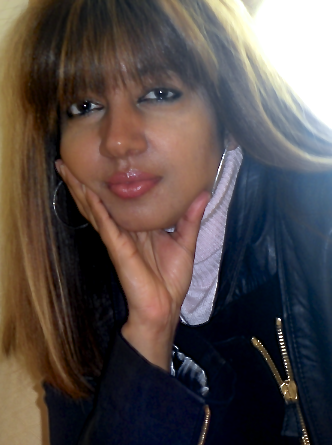 She’ll be talking about a very important thing in any romance. Building sexual tension. Georgia’s debut novel Absolute Surrender
She’ll be talking about a very important thing in any romance. Building sexual tension. Georgia’s debut novel Absolute Surrender 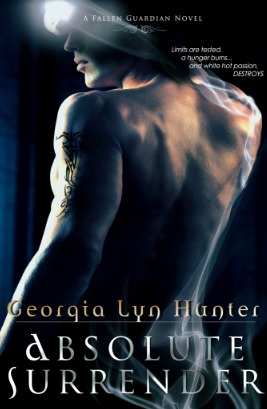 will be released in early 2013 and stars a really stubborn hunk who knows how to seduce his woman.
will be released in early 2013 and stars a really stubborn hunk who knows how to seduce his woman. 
Let’s get started, Georgia!
Okay… Hi everyone!
When I was asked to do this blog, the first thing to hit me was panic. I can write sexual awareness between hero and heroine well enough without thinking about it, but put a label on it and the well dries up…
Okay, let me take a little gander at a germ of a thought unraveling itself. The relationship between a man and a woman is one of the most complex to exist. It’s all about taking two people with different wants and needs, and merging them into one path.
In the world of romance, so many little things must take place and be set in motion for any tension to be built up between H/h. From the moment that first meeting happens, the reader must be drawn to the couple, feel the instant connection. You must know, feel that these two were meant to be together. Every single look, every single touch, and every sense, is played upon. The way they move, react to each other draws the reader in.
To give a little example, I’m pulling a snippet from the top of my head.
The early tension between H/h.
“I’m still shuddering from that little display,” she said to her friend, pulling her face in distaste as she set a tray of baked cookies on the counter.
“At least when you shudder this time, it will be for all the right reasons.” At the low murmur of his voice, she almost dropped the tray.
Swinging around, her chest brushing his, she stared into warm hazel eyes. The same lazy smile lingered on his incredible mouth. One she dreamed about from the moment she realized he was more than just her brother’s friend.
He leaned in, and she waited in breathless anticipation. But he merely reached past her, his tanned hand snagging a cookie. Leaning against the counter, he took a bite of his biscuit and studied her. “What’ve you been up to, princess?”
Now, lets dissect this paragraph. Below is a walk through of how I created the early developing awareness between H/h using the five senses.
“I’m still shuddering from that little display,” she (heroine) said to her friend, pulling her face in distaste as she set a tray of baked cookies on the counter.
“At least when you shudder this time, it will be for all the right reasons.” At the low murmur of his voice, she almost dropped the tray.
Hearing. Already you experience the tension the moment she hears his voice. Her reaction? The fact she nearly drops her tray, shows you her hands are shaking, the shock. And you can bet her hearts pounding like a drumroll.
Swinging around, her chest brushing his, she stared into warm hazel eyes.
 Notice, she swings to him, not turns. Her reaction’s instantaneous. When she faces him, he stares at her with warmth. He could have stood anywhere and announced himself, but he chooses to stand not just behind her, but so close that when she turns, her chest brushes his. His voice lowered, he makes his announcement. And in this way you see he’s definitely interested, even though his words to her are playful, teasing.
Notice, she swings to him, not turns. Her reaction’s instantaneous. When she faces him, he stares at her with warmth. He could have stood anywhere and announced himself, but he chooses to stand not just behind her, but so close that when she turns, her chest brushes his. His voice lowered, he makes his announcement. And in this way you see he’s definitely interested, even though his words to her are playful, teasing.
The same lazy smile lingered on his incredible mouth. One she dreamed about from the moment she realized he was more than just her brother’s friend. He leaned in, and she waited in breathless anticipation.
Another use of senses. Sight. Heroine zooms onto a feature of his that draws her in. Then stretching the moment, adding to the tension as she waits.
But he merely reached past her, his tanned hand snagging a cookie. Leaning against the counter, he took a bite of his biscuit and studied her. “What’ve you been up to, princess?”
This has not just verbal interaction of awareness, but the usage of eye contact and body language. And when he leans in she thinks finally, only he filched a cookie. But his action shows he’s reacting to her on a deeper level, by watching her, a level filled with awareness.Always remember as the plot progresses, you have to up the stakes. Dig deeper, heat things up between H/h.
Now, the scene leading to the moment everyone waits for.
Sister, that’s what he saw her as. She edged away, deciding to leave, when his arms snuck around her waist, startling her.
“Where are you off to?” He brought her back to him.
Trapped by the intensity of his stare, she became aware of her own thudding heartbeat. Not a hint of a smile on his tempting mouth now.
“Home. I’m leaving.”
His gaze dropped to her lips, lingered. “I’ll drive you.”
“Why?”
Slowly, he looked back at her. “Because I’m done waiting.”
Now the stakes are upped, and tension’s wired you hard and fast.
Sister, that’s what he saw her as. She edged away, deciding to leave, when his arms snuck around her waist, startling her.
“Where are you off to?” He brought her back to him.
Trapped by the intensity of his stare, she became aware of her own thudding heartbeat. Not a hint of a smile on his tempting mouth now.
With a look alone, instinctively as the reader you feel the change in their relationship. It’s why with romance novels all emotions are exaggerated. It’s to grip the reader and draw them into this sensual experience, making you a part of it.
“Home. I’m leaving.”
His gaze dropped to her lips, lingered. “I’ll drive you.”
“Why?”
Slowly, he looked back at her. “Because I’m done waiting.”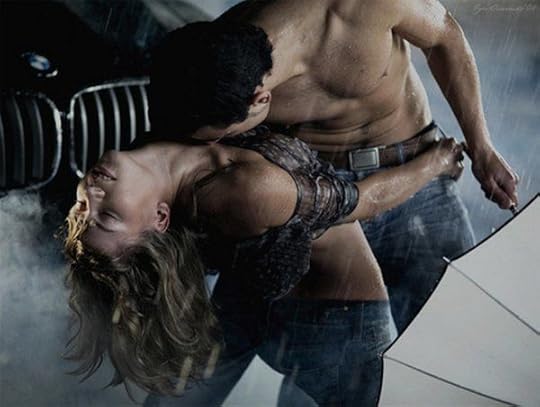
Dialogue heightens the sexual tension. When the hero and the heroine are together you must see sparks fly, whether by eye contact, or by a casual touch of their hands. And when he looks at her, a profound feeling must steal over both heroine and reader, their emotional impact felt. This puts all the key elements in place and you feel the sexual, and emotional tension between them. You wait eagerly for that first kiss, first touch, because you know when it happens, it’s sure to be explosive.
So there you have it. Remember it’s all a matter of making sure to raise the stakes after each encounter, to build up on sexual tension leading to that first moment of intimacy. Better yet, and so much easier when as a writer you just let your characters guide you along. They’ll often show you what they want.
Happy writing! 
Tagged: NaNoWriMo








November 18, 2012
What’s your name again?
Good morning!
Another day, another post in our series of NaNoWriMo…alternated. Melissa Groeling has come to visit me today, and she brings one of my favorite topics. Names. But before we let her rant away, let me tell you that Melissa had her YA Traffic Jam
and she brings one of my favorite topics. Names. But before we let her rant away, let me tell you that Melissa had her YA Traffic Jam 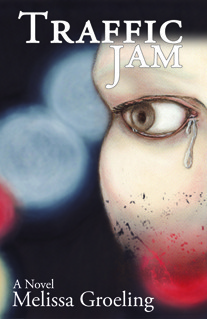 released this year, a brilliant novel on bullying in schools. It’s definitely a thoughtful story worth reading.
released this year, a brilliant novel on bullying in schools. It’s definitely a thoughtful story worth reading.
Welcome, Melissa!
Thanks a bunch for having me here today, Piper!
Choosing the Right Names for Your Characters
Helen.
Natalie.
Travis.
Cole.
Martin.
Jon.
As the ol’ saying goes, “What’s in a name?”
What indeed?
Generally speaking, a name is identity. A name is something to signify a person, a pet, an object. A name is stark, frank and associative. But the simplicity of a name becomes significantly more complex when you’re doing something like, oh say, writing a story. You want a hero’s name that’s going to conjure a smile and a fist-pump in the air. You want a lover’s name that will make the heart race. You want a villain’s name that will send a shivery ripple of fear down the spine. You want a name that not only identifies your character but carves out a space in your reader’s head long after the book is put down.
In my experience with name-searching, I try not to select a name of someone I know. In any story, you’re building a character from the ground up, and using a name of someone you know, at least for me, takes away from the mystery and the fun of getting to know that someone as the story unfolds. I also tend to select a name based on the character’s appearance. I’ll get a basic idea about this person’s general appearance whether it’s male or female, child or adult then think, “Well, what kind of name does he/she look like?”
And if I’m really drawing a blank, that’s when I’ll ask for help. I distinctively remember having a hard time coming up with names for the two sisters in my young adult novel, Traffic Jam. So I asked my parents,
“Hey, can you guys give me some names of two sisters? Ready, set, go!”
Now seeing as how they’re parents and they’ve had quite a bit of experience naming children, the act of selecting names came pretty natural to them and honestly, I was sitting there with a pen and a piece of paper, trying to keep up as they fired their name cannons at me.
And how did I select those names? Or any character names for that matter?
Something always clicks for me. I’ll look at a name and just know. Sounds hokey, right? But I’m telling you, the feeling is just like when an idea of a story pops into your head. It’s like a switch being thrown deep inside your brain. It’s one of those ah-ha! moments.
At least that’s how it works for me. Like the very act of writing, the process comes differently for everyone. Things would really be easy if we could just name all of our characters Bob.
Tagged: NaNoWriMo








November 15, 2012
Support is everything!
Hello everyone and welcome back to NaNoWriMo – or what we made of it!
Today, my friend  and author Cora Blu is visiting me. She writes Interracial Romance and an Underwater Fantasy Series. I’ve read Dagger, the opining novel, and loved that shark-guy!
and author Cora Blu is visiting me. She writes Interracial Romance and an Underwater Fantasy Series. I’ve read Dagger, the opining novel, and loved that shark-guy! 
 Her newest release is The Man He’ll Never Be – book two in the Midnight Moanings Collection.
Her newest release is The Man He’ll Never Be – book two in the Midnight Moanings Collection.
The topic she chose is supporting characters.
Welcome, Cora! I’m glad you’re here today.
Thank you very much, Piper! 
Choosing a supporting cast for an interracial love story
This will depend greatly on the tone of the story and the visual you want the reader to take with them. Much like any other story, however there are things to watch out for.
First, let me say these are my opinions, not rules.
Interracial love stories aren’t necessarily about race. Yet if you are going to highlight the ethnicity of the character, it’s best if it serves a purpose to the overall story. Most people don’t walk around addressing each other by their ethnicity. However, they may joke about differences or habits prone to one ethnic group over another in conversation if that’s the level of their relationship. (Did I say ethnic enough?)
Be mindful of your supporting characters dialog and actions. Do not over stereotype your characters. If, let’s say, the hero is Caucasian. When he introduces his Black heroine to his mother, don’t pull her reaction from the 1930’s unless you’ve set the stage for that issue to surface. Which could also be a point that leads you to an underlying issue of a subplot? This could lead to dialog long overdue between him and his mother.
Keep the characters true to their scripts and allow the h/h to grow, evolve, solve the problems find the Hope Diamond— whatever. Give the reader subtle clues as to why your h/h’s personalities are the way they are, by showing the supporting personalities that helped to mold their lives.
You know when someone comes from a loving home by the way they treat others. Or you meet someone’s mother and the first thing you say is “I see where you get xxx from.”
Don’t create over the top, nagging characters to add spice and now they don’t support the type of h/h you’ve created or the reverse. You don’t allow them to interact.
Example:
You’ve chosen to make the heroines parent’s home, the go to place. Information central. You can hear people talking as you walk up the sidewalk. Yet when the hero comes over, there’s no one in the room because you’re uncertain as to how they should act.
They shouldn’t “act”, they should “react.”
Allow them to have dialog. React, however, their personalities direct them. They can throw in an odd look or a questioning stare. A minute of dead air. Pull the heroine into the next room to whisper and everyone can hear it. Because that’s how people who are expecting one thing and get another, react.
A few seconds… Not the entire scene.
Again, if the story is a racially motivated one, than the reactions will be more and longer, different.
Most families and friends have enough issues going on. Who you chose to date isn’t the issue… Not for too long, anyway.
Keep the issues relevant to what’s going on with the h/h to move the story along and make it interesting. The people in their lives should fit their circumstances.
People meet at work, at parties, on-line (the self-check-out at the grocery store seems to be the spot to hold a conversation)… Friendships develop, romances grow. Families are started.
Allow your supporting characters to have personalities that support the h/h you’ve created, and not a stereotype to catch a few laughs.
Tagged: NaNoWriMo








November 9, 2012
Take a deep breath (or, commas)
A round of applause for my friend, Lynda Kaye Frazier, who has a very interesting story to tell today. It’s all  about commas and the wish to die when you’re confronted with them. But I know for a fact, that Lynda figured
about commas and the wish to die when you’re confronted with them. But I know for a fact, that Lynda figured  out how to use them. Her single title novel Rescued from the Dark (romantic suspense) will be released shortly after Valentine’s day next year, but you can read her short story Saving Angel in the anthology Wild at Heart.
out how to use them. Her single title novel Rescued from the Dark (romantic suspense) will be released shortly after Valentine’s day next year, but you can read her short story Saving Angel in the anthology Wild at Heart.
Okay, I’ve said enough. Your turn now, Lynda.
Thanks, Piper. So…
How I fought the comma and won.
But before she’s going to start, (comma here or not?) let me tell you a little about her. She’s a witty lady who doesn’t only love to write romantic suspense, but who also loves to get her hands on people. She a respiratory therapist and an Ultrasound technician. Welcome to my site, Lynda.
Thanks, Piper. I’m happy you thought of me when you started your blog series. Here’s my addition to you pseudo NaNoWriMo-thing. 
How do I love thee comma, let me count the ways.
Don’t worry it will be a short list. When I started to write I thought I knew everything I needed to put together a great story. Boy was I wrong. The Comma defeated me. I either had too many, didn’t have enough or put them in the wrong place. I was so aggravated, but soon took control. It looked so cute and very useful but it had an evil side.
It’s been over 30 years since I took an English class and I work in the medical field, so no commas needed. I dictate, someone else types it out. I knew I needed help but it had to be simple, I am old. So I went back to the beginning. What is a comma?
A punctuation mark ( , ) used to indicate a separation of ideas or of elements within the structure of a sentence.
Ok, that makes sense, right? Well it did until I started reading all the rules, and there are a lot of rules. So I needed it simplified. Here are the basic uses of a comma.
1. Use a comma to separate the elements in a series.
2. Use acomma + a little conjunction (and, but, for, nor, yet, or, so) to connect two independent causes.
3. Use a comma to set off introductory elements.
4. Use a comma to separate coordinate adjectives.
5. Use a comma to set off quoted elements
6. Use a comma to avoid confusion.
Then there are basic rules for using a comma.
1. Between Items in a Series. When you are listing three or more items in a sentence, simply place a comma between each member of this list.
2. Between two sentences
3. To attach words to the front or back of your sentence.
Okay, now my head was spinning. How was I going to get this straight?
I needed to master the comma. Then I found commas made easy. Simple facts that were written in English.
Memorize these!
Rule 1: Use a comma to separate two main clauses linked with a conjunction (for, and, or, so, but, nor, yet).
We came to class, but everyone had gone home.
Rule 2: Use between introductory element and subject.
Since no one was there, we decided to go over to the Sub for coffee.
Rule 3: Use a comma to separate unnecessary information from rest of the sentence.
Cheryl, my roommate, got a latte because it is her favorite drink.
Rule 4: Use a comma to separate items in a series.
Cheryl bought a chocolate donut, a cinnamon bun, three donut holes, and two twists.
Rule 5: Use to separate a list of adjectives.
the soft, white, fluffy inside of the chocolate-glazed, sprinkle-covered donut delighted me.
 Now those are rules I can understand, and use. I now have a love hate relationship with the comma. It loves to hate me but I’m starting to win him over, and so can you.
Now those are rules I can understand, and use. I now have a love hate relationship with the comma. It loves to hate me but I’m starting to win him over, and so can you.
Tagged: NaNoWriMo








November 7, 2012
Let’s talk!
Welcome back to the next round of our blog post series on the craft of writing. Today, my guest is fellow author Zrinka Jelic. She’s writing  for Black Opal Books, too, and her romances published are The Treasured Chest and Bonded by Crimson.
for Black Opal Books, too, and her romances published are The Treasured Chest and Bonded by Crimson. 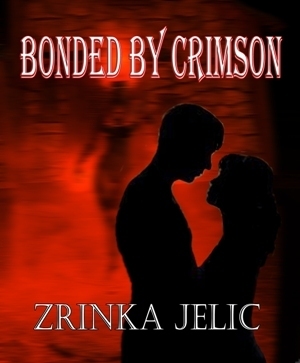 Read on and find out what she can tell you about dialogue in novels.
Read on and find out what she can tell you about dialogue in novels.
Thanks for coming, Zrinka.
Thanks for the invitation! 
A year ago or so, I’ve taken an excellent workshop on dialogue, presented by Christine Fairchild. It would be impossible to sum up all her teaching on dialogue alone in one blog. So for more information about her workshop(s) and when and where she’d be teaching next visit her blog
http://editordevil.blogspot.ca/
Here are just some of her pointers on dialogue.
Dialogue can be external (every time your character opens his mouth) or internal (when your character opens his mind). But each time the reader should learn something about your character or the character with whom they are interacting.
No matter the genre you’re writing in, or your story, or type of your characters, the rule #1 is: dialogue must progress the plot, reveal or transform the characters, deepen conflicts, or build suspense. No exceptions.
Action and dialogue are the two strongest forms of revealing a character. In the screenwriting world there is a saying: action is dialogue.
The two serves the author, since this mantra typically ensures the author will assess the quality of the dialogue based on whether it creates movement and/or change.
How characters speak, either to themselves or to one another, should reveal who they are.
Here are a few dialogue DOs and DON’Ts.
DO:
- Make it clear who is speaking by attaching dialogue to the character’s action. But don’t overdue this either. Again, moderation and variation of pattern is best to maintain reader interest.
- Sprinkle a few variations in the manuscript when they are the best and/or the only way to show specific behavior, such as “he whispered” or “she growled” or “he mumbled.” When it naturally matches the action or plot events, then it will blend in better.
- Use verbs and nouns instead, such as “she said, her face blushing.”
- Use strong words, or striking sentences, or clipped phrasing to show the speaker is angry or upset. Better to create the sense of intensity through choice words, and avoid empty punctuation.
- Shoot for statements that make the speaker look stronger. Questions make speakers look weak, so they should be limited in hero/heroine dialogue. Statements can usually convey the same information in a more interesting manner, such as “Tell me you’re okay now” or “I know he’s not here to help us, so why he’s here is my question.”
- Use subtext or code-speak between two characters to communicate the same feelings. For example, Rick in “Casablanca” said “Here’s looking at you, kid” to say “I love you” and Rhett in “Gone with the Wind” said “Frankly, my dear, I don’t give a damn” to say “I don’t love you anymore.” The point is, get creative and you will enrich the story and captivate the reader.
- Sprinkle information and back-story through casual comments and natural exchanges, such as arguments and banter. One or two at a time is plenty. Too much, and the reader will suspect the author is forcing the issue.
- Let characters say unique, funny, sarcastic, mean, or otherwise interesting things, even in common situations. Readers like to feel like they can’t expect what the character is going to say. Or take the common phrase and make it more interesting. This from Law & Order when the detective says to the suspect’s face, “I’ll get you,” and the suspect responds, “Good luck on your hamster wheel.”
DON’T:
- Use a lot of dialogue tags, such as “he/she said” or “he explained” or “she asked.” They are not as invisible when used en masse. Use them sparingly
- Use alternate dialogue tags too much, such as “he muttered” or “she prattled” or “he eviscerated.” The more unique the tag, unfortunately, the more attention it calls to itself. You don’t want to reader stumbling over something that should be invisible. These break the reader out of the story.
- Attach adverbs to dialogue tags, such as “he said wistfully” or “she asked regretfully.” This is a sure sign to agents and editors that the author is an amateur. Use action to show these emotions instead.
- Exclaim all the time. Exclamation points are too loud to use often. They tell, not show action. And, frankly, they don’t tell much. There are just punctuation, not character-revealing moments.
- Ask questions so often, such as “Are you okay now?” or “Why is he here, if he’s not going to help us?” Questions bring pacing to a halt. The reader’s mind will momentarily switch gears to assess and answer the question before moving forward. The more questions, the harder it is for the reader to move forward with the text. Questions are not action. They are stop signs.
- Say “I love you” or “I hate you” or “I want you” or “I forgive you” because these sentences have been said so often they’ve become meaningless. Thus, when they appear, the emotions behind them are somewhat diminished. Unless the statement is so unlike the hero/heroine (such as the emotionally shut-down father in “On Golden Pond” or a hard-boiled cop), or the villain is using them in a creepy way, then avoid them.
- Throw information dumps or too much back-story on the reader through spoken dialogue so they sound like professorial speeches. For example: “as you know, Bob…” or “Let me tell you about the time…” or “One day…” Readers have seen this a million times and they know it’s just a thinly disguised information dump.
- Let characters speak in boring, everyday phrases or chit chat, such as “How are you” or “So nice to see you” or “How’s the family these days.” Readers pick up your story to be entertained, not to hear useless prattle available on any street corner. Hero/heroines and villains should be especially more interesting and unique in their speech.
And the list goes on and on, but you get the picture.








November 4, 2012
An author’s voice
Hey Ladies and Gentlemen!
Here’s our first guest in the blog series about the craft of writing (or pseudo-NaNoWriMo  )
)
Please welcome with me author Liv Rancourt,  who’s going to talk to you a little about an author’s voice today.
who’s going to talk to you a little about an author’s voice today.
She’s a lively writer and her preferred genre is romance, often teamed up with some real hot vamps. Her newest release The Santa Drag is a chick-lit, and just right for the holiday season.
But enough of me talking. Liv…it’s your audience now.
Thanks, Piper, for the chance to be a guest on your blog. I very much appreciate it.
What is Voice?
Voice is one of those things that a new-ish writer worries about, but often has a difficult time defining. In fact, I had a little bit of trouble defining it, despite the fact that it was my idea to write this post. I wandered around the internet and here’s what I learned. Voice is the result of each individual author’s style of combining words. Wikipedia compares Voice with the different instruments in an orchestra. You can tell the difference between a flute and a tuba, right? In the same way the reader recognizes differences between authors.
To use a different image, Voice is sort of a written thumbprint, a distinctive way each author has of combining words. To give you an idea of how it works, here are the first lines from two very different novels:
“Sometimes you get up in the morning and you know it’s going to be one of those days. No toothpaste left in the tube, no toilet paper on the cardboard roll, hot water cuts out halfway through your shower, and someone’s left a monkey on your doorstep.” (Plum Spooky, Janet Evanovich)
“It is a truth universally acknowledged, that a single man in possession of a good fortune, must be in want of a wife.
However little known the feelings or views of such a man may be on his first entering a neighborhood, this truth is so well fixed in the minds of the surrounding families, that he is considered as the rightful property of someone or other of their daughters.” (Pride & Prejudice, Jane Austen)
Granted, you would expect these two authors to sound very different, but here’s the thing: in each case, you get an image of what kind of person the narrator is as you read those short clips.
That’s Voice.
If you look at these two examples, there are as many similarities as there are differences. Both start out with broad opening statements,“…it’s going to be one of those days,” vs. “…a single man…must be in want of a wife.” They both go on to use concrete details to support those statements, and then finish up with a stroke of humor. It’s the voice that separates them. To borrow the Wikipedia imagery, Ms. Austen is the cello, and Ms. Evanovich is the trumpet. With cymbals. Or maybe a kazoo.
It’s as easy…and as hard…as that. The way every writer combines words to make stories creates their voice, which gives the reader a sense of who the narrator is. In time, your writing voice will become as recognizable as, well, your speaking voice and to an extent readers will like your work – or not – because of how they respond to your voice. But don’t freak out or anything. YOU have a voice. You do. And you can develop it.
How?
By writing. Write regularly. Try different styles and see what fits. You have to try different things to see what works best for you. After a while you’ll see patterns and have little “a-ha!” moments when you realize that one way of doing things really does work better for you than another.
I had a singing teacher once who made us study the great jazz vocalists and learn to copy them, figuring that when we were out doing our own thing, we could borrow a phrase from Billie Holiday or a lick from Ella Fitzgerald when we needed them. No one’s every going to accuse me of sounding like one of these masters, but I learned from them, and you can do something similar. Read widely and study what you like about a particular author. Then write. Regularly and often. That’s all it takes to cultivate a voice that marks a piece as distinctively YOU.
Tambourine and all.
Peace,
Liv
Tagged: NaNoWriMo










